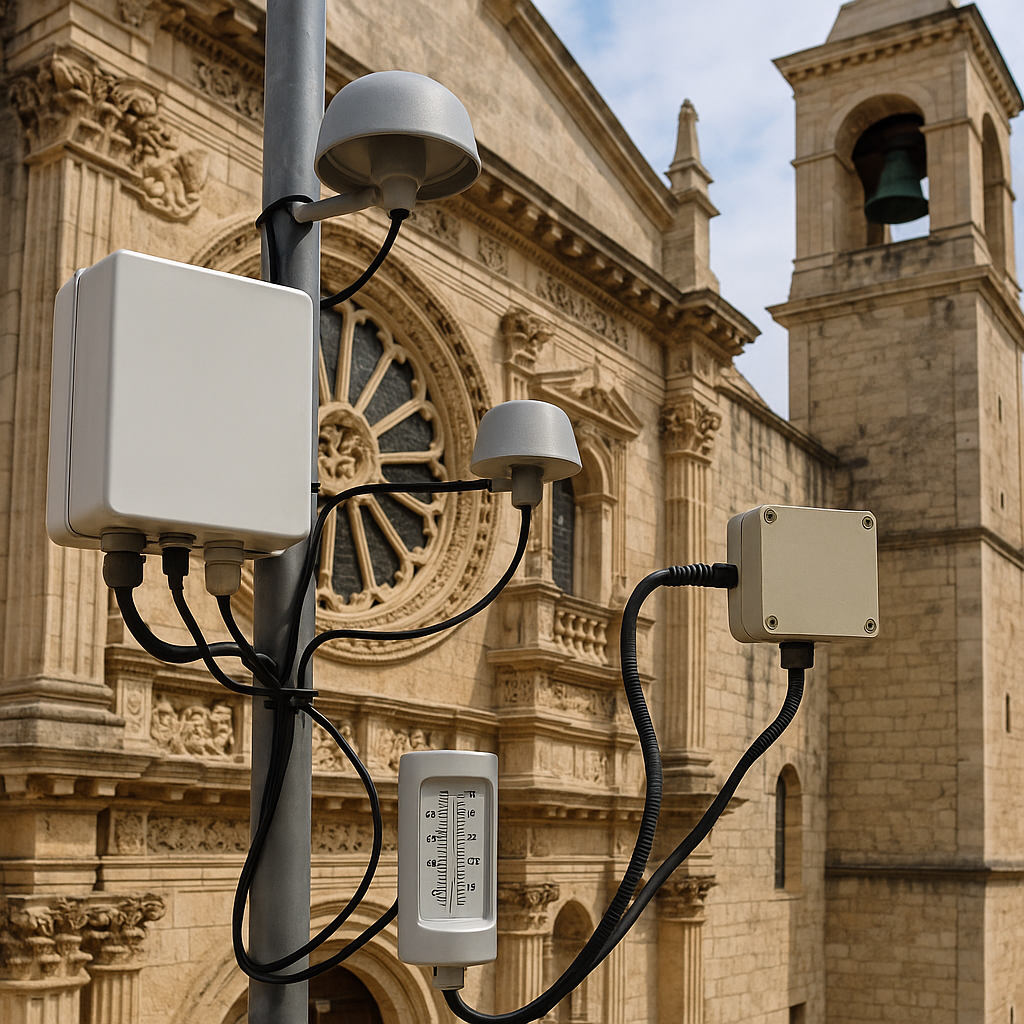New AI model could save historic monuments before they crumble
Cultural heritage conservation has long struggled with the balance between preserving historical authenticity and embracing modern technology. Climate change, pollution, and physical degradation threaten countless historical sites, yet many preservation systems still rely on reactive maintenance.

Researchers have proposed an advanced artificial intelligence (AI) framework that could transform the way heritage buildings, monuments, and museum artifacts are preserved.
The study, titled "AI-Based Proactive Maintenance for Cultural Heritage Conservation: A Hybrid Neuro-Fuzzy Approach," was published in Future Internet (MDPI) and outlines a predictive AI model capable of anticipating structural damage before it occurs.
A new intelligence for the past
Cultural heritage conservation has long struggled with the balance between preserving historical authenticity and embracing modern technology. Climate change, pollution, and physical degradation threaten countless historical sites, yet many preservation systems still rely on reactive maintenance. The new research introduces an AI-based proactive maintenance model designed to detect early warning signs of deterioration using multi-sensor data, including temperature, vibration, and pressure readings.
What makes the system unique is its hybrid architecture, which merges a Feedforward Neural Network (FF-NN) for high-accuracy fault detection with a Mamdani-type Fuzzy Inference System (MFIS) that provides transparent, explainable recommendations. This sequential design gives conservation professionals the dual advantage of data precision and interpretability, a balance rarely achieved in AI-driven heritage preservation.
The hybrid system achieved a mean accuracy of 94.3%, precision of 92.3%, and recall of 90.3% over multiple simulation runs. While neural networks typically operate as opaque "black boxes," this approach allows experts to see how and why the AI reaches a decision , a crucial step toward institutional acceptance and trust in automated systems.
How the system works: Predict, interpret, preserve
The researchers structured their framework into two interconnected modules. The neural network first identifies potential faults by analyzing complex sensor data patterns, while the fuzzy inference layer translates these findings into actionable maintenance guidance.
The model was trained on 1,000 synthetic data samples, simulating environmental and structural conditions across a typical year of heritage site monitoring. It considers realistic parameters such as seasonal temperature cycles, air pressure fluctuations, and mechanical vibrations from HVAC systems or nearby infrastructure.
In operation, the system interprets sensor signals and classifies site conditions into three categories:
- No Action: for stable environmental and structural readings.
- Conditional Maintenance: for emerging but non-critical changes requiring scheduled intervention.
- Immediate Maintenance: for detected faults needing urgent repair.
This hierarchical system ensures that maintenance teams can prioritize their response based on evidence-driven insights. Importantly, the fuzzy layer adds human-like reasoning, converting machine outputs into linguistically clear recommendations, for example: "Pressure anomaly detected, schedule inspection within one week." This interpretability ensures AI can serve as an assistive partner, not an unaccountable authority.
Each of the 27 fuzzy rules was designed through expert collaboration, ensuring decisions align with existing cultural conservation protocols such as ISO 11799 and ASHRAE 2020 standards.
Balancing accuracy and transparency: The core challenge
The research brings out a critical truth about AI in heritage science, i.e., accuracy alone is not enough. Pure deep learning systems can outperform traditional monitoring tools but lack transparency. Conservation experts require systems whose logic they can audit and trust.
Here, the hybrid neuro-fuzzy model provides a compelling compromise. It combines the precision of neural networks with the explainability of fuzzy logic. In testing, the neural module excelled in recognizing subtle fault patterns, while the fuzzy system translated those results into decisions professionals could understand.
However, the study also highlights important trade-offs. Under extreme fault conditions, the hybrid model's recall dropped from 96% to 47%, revealing that fixed fuzzy rule sets struggle with gradual or borderline degradation signals. This limitation suggests that while the hybrid model excels at general prediction, it may miss emerging anomalies that evolve slowly, a critical issue for fragile or safety-sensitive heritage structures.
Despite this, the system demonstrated impressive operational performance, with real-time decision latency under 72 milliseconds and interpretability scores exceeding 86%. Its transparent rule-based outputs and decision trails make it suitable for audit-compliant conservation programs, aligning well with modern AI governance standards such as the EU AI Act.
Future-proofing the past: What comes next
This research is a first step toward adaptive, learning-based conservation systems. The researchers propose future improvements that could integrate adaptive fuzzy learning, allowing the system to refine its decision rules dynamically as new data becomes available. They also envision incorporating real-world sensor data from historic monuments across varied climates to validate and calibrate the model's predictions.
Another frontier involves enhancing temporal analysis using Recurrent Neural Networks (RNNs) or Long Short-Term Memory (LSTM) architectures, which can track how deterioration unfolds over time rather than only detecting static faults. Such models could enable predictive maintenance scheduling, anticipating future damage rather than reacting to it.
In the long term, this hybrid framework could evolve into a cornerstone of digital twin systems for heritage sites, offering virtual models that simulate structural health, environmental stress, and preservation outcomes under different conservation strategies.
- FIRST PUBLISHED IN:
- Devdiscourse









